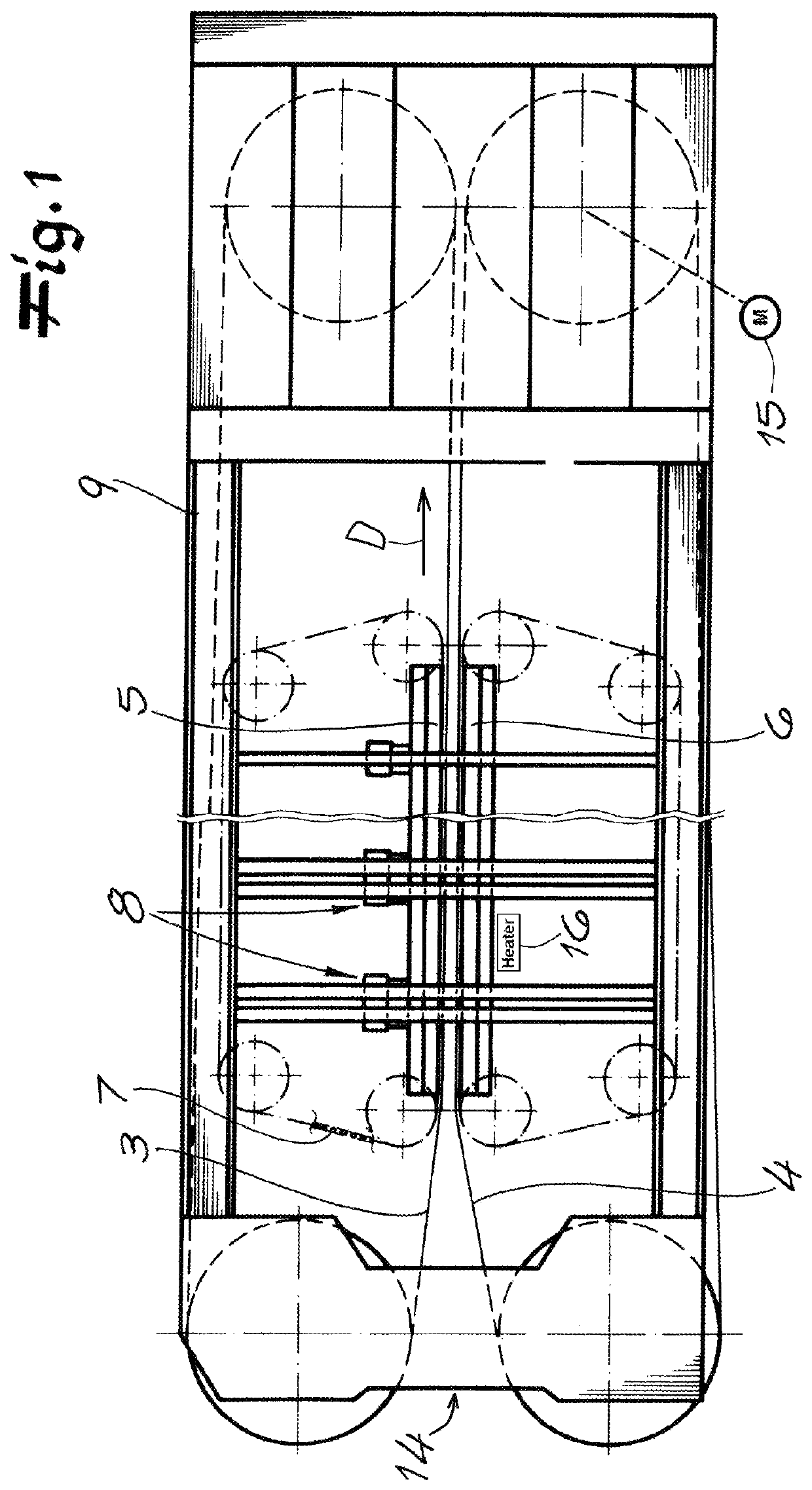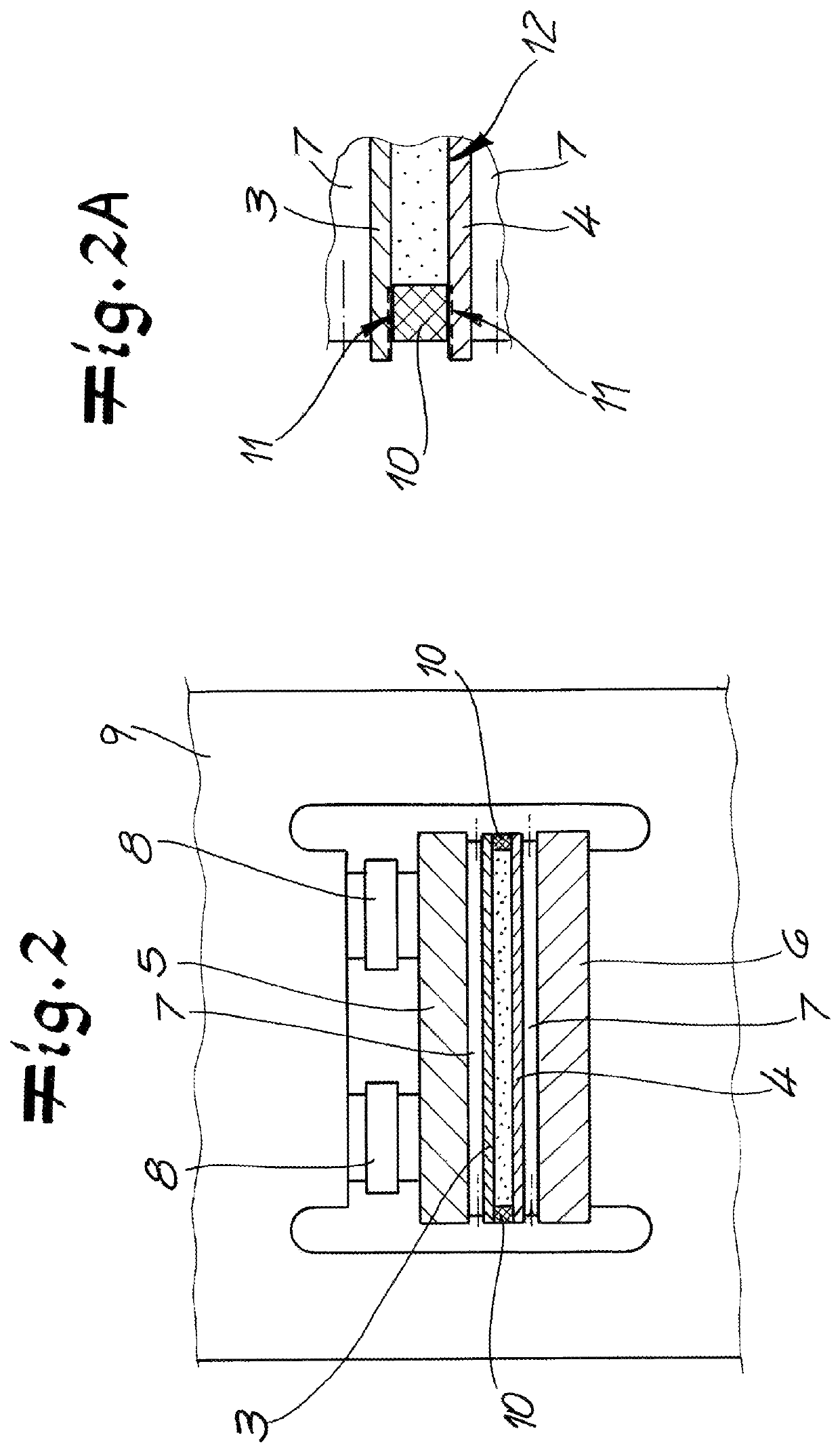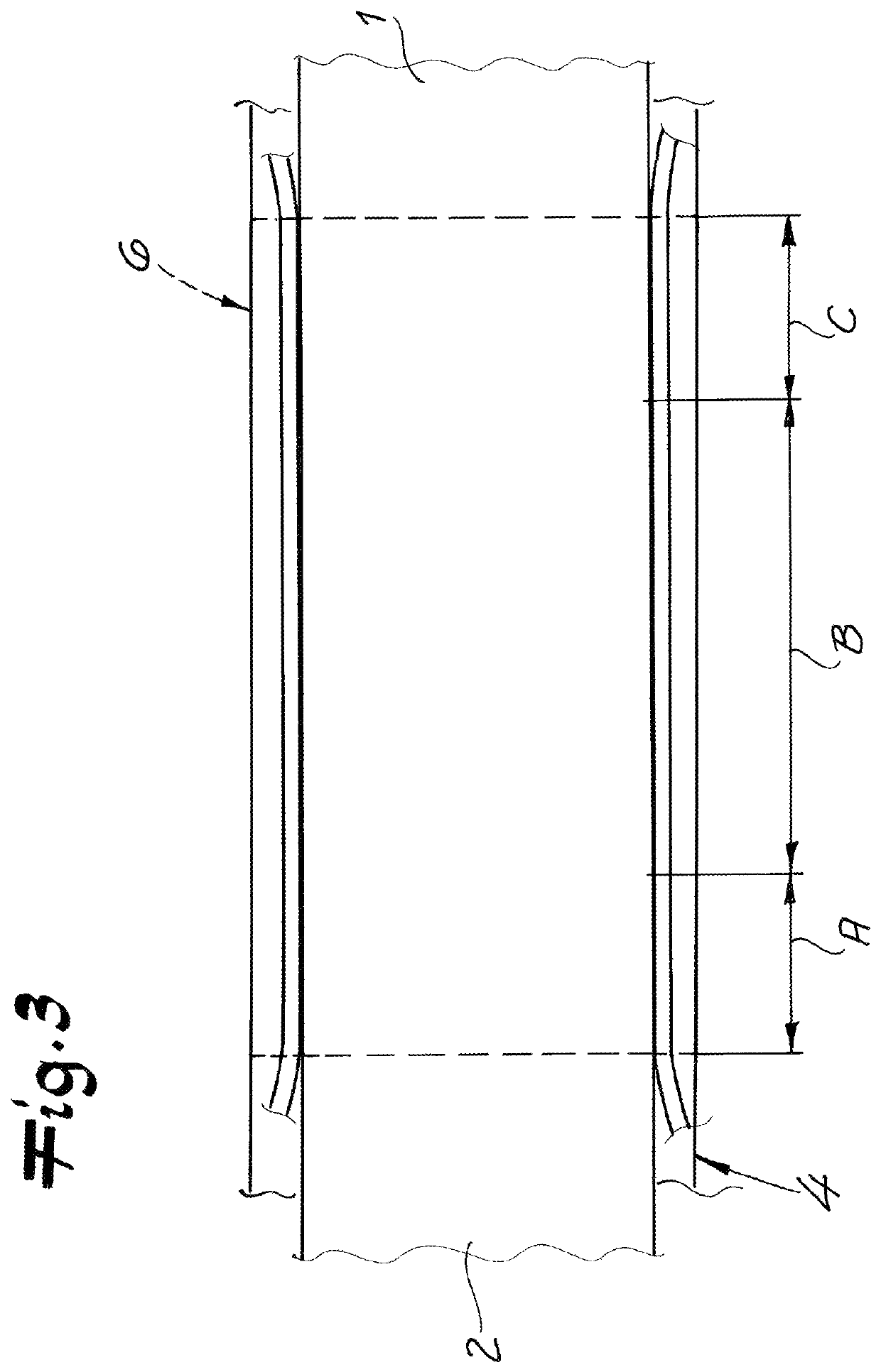Continuous sheet press and method of operating same
- Summary
- Abstract
- Description
- Claims
- Application Information
AI Technical Summary
Benefits of technology
Problems solved by technology
Method used
Image
Examples
Embodiment Construction
[0036]The drawing shows a press for making a continuous composite sheet 1 from a (thermosetting) semifinished mat 2, in particular for pressing and consequently consolidating semifinished SMC mats. The press is fundamentally designed as a double-belt press of generally standard design.
[0037]Such a double-belt press has a continuously rotating top steel belt 3 in the top part of the press in a design that is fundamentally known, and a continuously rotating bottom steel bent 4 in the bottom part of the press. Furthermore, a heatable top press platen 5 is provided in the top part of the press and a heatable bottom press platen 6 is provided in the bottom part of the press. The press belts 3 and 4 are braced respective upward and downward against the upper and lower press platens 5 and 6 via arrays of unillustrated roller rods 7 or bars. The press pressure is created by press actuators, for example hydraulic press cylinders 8 that are supported on a fixed press frame 9 and are effective...
PUM
| Property | Measurement | Unit |
|---|---|---|
| peak-to-valley height | aaaaa | aaaaa |
| peak-to-valley height | aaaaa | aaaaa |
| height | aaaaa | aaaaa |
Abstract
Description
Claims
Application Information
 Login to View More
Login to View More - R&D
- Intellectual Property
- Life Sciences
- Materials
- Tech Scout
- Unparalleled Data Quality
- Higher Quality Content
- 60% Fewer Hallucinations
Browse by: Latest US Patents, China's latest patents, Technical Efficacy Thesaurus, Application Domain, Technology Topic, Popular Technical Reports.
© 2025 PatSnap. All rights reserved.Legal|Privacy policy|Modern Slavery Act Transparency Statement|Sitemap|About US| Contact US: help@patsnap.com



